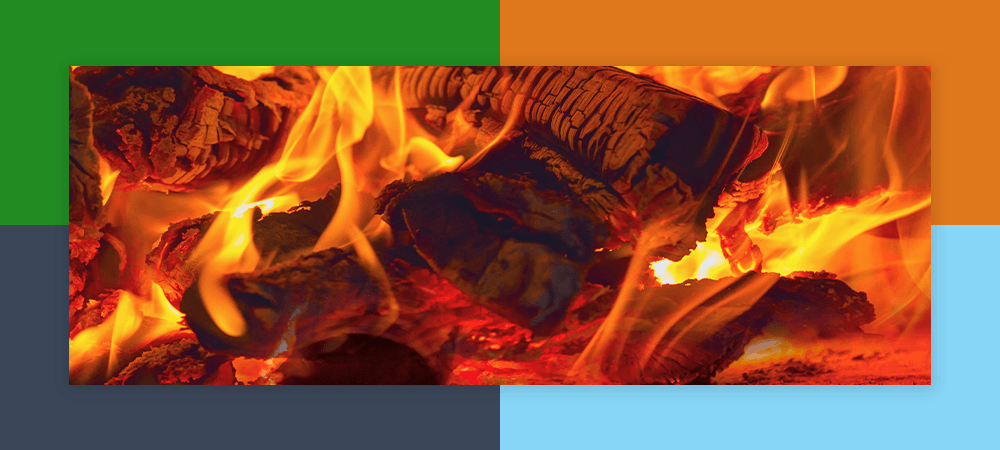If you're in the market for a wood boiler, you may have come across secondhand options. While they may seem tempting, the value of a used boiler should be carefully considered. You could end up spending even more in the long run. New boilers might have a higher price tag, but today's models offer valuable cost-saving features. Plus, you may be able to offset the initial expense through state and federal tax credits.
To help you make an informed decision, let's explore the pros and cons of buying a used wood boiler and how you can save on a new purchase.
Things to Consider When Buying a Used Wood Boiler
Wood boilers have seen significant design improvements in the last few decades. Today's models are more efficient and safer and can include features like lambda control to improve combustion. People often find that new boilers actually save them money in the long term while offering other benefits related to pollution, maintenance demands, unit quality and warranties. Here are important considerations when comparing new vs. used boilers.
Efficiency and Emissions
Today's wood boilers can reach efficiency levels of around 80%. This means that 80% of the energy in the fuel you put in gets converted to heat. Old boilers only offer around half of that number, so you'll spend more on fuel to get the same level of heat.
EPA regulations typically do not apply to used wood boiler sales between private parties, but wood boiler companies cannot sell boilers that are not EPA certified, whether used or new. Since 2015, wood boilers have been regulated. This has led to far fewer options for new purchases. However, post EPA regulation boilers offer many advantages beyond being far easier on the environment. New technology includes lighting doors, external heat exchanger cleaning, internet connectivity, high durability, and built-in storage tank management.

Boiler Lifespan
A new indoor wood boiler can last a few decades if well-maintained. The remaining life of a secondhand boiler can vary widely, especially if you don't know how well the owner treated it or if they conducted regular maintenance. If you buy used, you might find yourself looking for another boiler sooner than you think.
Condition
Wood boilers produced in the decades before the 1990s can often last a very long time. The boilers are characterized by simple draft controls, cast iron combustion grates, and an updraft configuration. Because water fully surrounds most parts exposed to fire, they do not easily burn out and leak. Despite being hardy, these boilers are not as efficient and can produce massive amounts of creosote and emissions. They are also more difficult to control and are known for overheating. Large improvements in modern wood boilers are moving consumers away from these antiquated designs, which also means manufacturers are moving away from supplying parts. Consider not only performance aspects but also whether or not spare parts will be available, if necessary. Pre-1990s wood boiler boilers have few wear parts. Chiefly, cast iron grates can crack or warp. Draft regulators and rubber gaskets fail from overheating events. All parts are getting harder and harder to find for these old boilers. The boiler vessel itself may be rock solid, but without the availability of wear parts, the boiler may be a useless box of heavy steel.
Wood boilers produced from the late 1990s onward are often down-drafting boilers. Some call them gasifying boilers. Down-drafting boilers are much more controllable than earlier boiler designs. They also burn much cleaner and use less wood. However, down-drafting boilers misused may have hidden damage. Down-drafting boilers capture smoke when they reach the operating limit. The smoke can condense into a sticky, wet, acidic creosote that gathers on firebox walls. The more times the acidic creosote gathers and the longer it remains on firebox surfaces, the quicker the steel will corrode away, causing a leaking and nearly impossible to repair firebox. Therefore, down-drafting boilers can often look very nice on the outside, but may have thin steel in the firebox. It is not easy to check for thin steel. Sometimes the steel can become so thin that it will flex. Other times the steel won't flex to the touch but may be bulging around the pressure stays, which are the reinforcement connections between the firebox walls and the water jacket. Any down-drafting wood boiler older than ten years should be viewed with suspicion. There may be hidden damage.
On the other hand, if the boiler was operated correctly, it may have many years or even decades of service life remaining. At the very least, make sure boiler controls are intact before purchasing. Also, make sure internal combustion refractory parts are serviceable. Compare to supplier images of new parts. Ensure that the supplier still exists. Many boiler suppliers, which started after the oil price spike of 2008 have subsequently folded in the face of EPA certification requirements and decreased sales.
Generally speaking for all wood burning boilers, when purchasing used, look for signs of boiler leaks, which will often show reddish-brown rust stains. Look for lines on the inside walls of the boiler that would indicate how high the owner let the ash pile up. Poor maintenance often results in shorter boiler life. High ash lines on the walls inside the firebox might indicate poor maintenance. If there are indications that soot poured out of the front door of the boiler, that is also a sign of poor operation and is a big warning sign for down-drafting boilers. Dripping soot stains indicate there were times that the boiler was being corroded internally. Check around rubber gaskets for signs of leaks. Usually, rubber seals are easily replaced, but if a leak has been left for too long, the steel could also be damaged, which is difficult to repair. Operate all doors, buttons, and levers to check for smooth operation. Damp basements and wet storage locations may have caused door handles, hinge pins, and other moving parts to rust severely. Ask the owner for service records. Ask the owner why the boiler is being sold. Ask if they have had any troubles with the boiler or with getting spare parts or technical help. Look on the internet for any news about the boiler manufacturer or importer (many wood boilers are imported).
Red Flags:
- Missing controls
- Rust around tappings, rubber gaskets, or anywhere else
- Down-drafting boilers older than 15 years used without thermal storage
- Dimples in the wood firebox walls
Maintenance Requirements
An older boiler often comes with more intense maintenance requirements. With more wear and tear, you may need to replace components or conduct repairs more frequently. Something else to consider is that manufacturers may no longer produce the parts for old boilers. If you can find spare parts, they could cost a premium. New boilers are typically simpler to maintain, and parts are easy to find.
Size and Design Options
Correctly sizing your boiler is crucial to meet your building's heating demands while also operating the boiler efficiently and safely. You should also consider the size of a thermal storage tank, which is almost always recommended if not required.
Warranties
Used boilers generally don't have warranties, or they may be non-transferable. If you have a problem with your used boiler, you'll need to pay out of pocket for repairs. New wood boilers can come with decades-long warranties for your peace of mind. For example, the Fröling S3 Turbo Boiler has a 20-year limited warranty.
Seller Reliability
Unfortunately, when it comes to buying used, you can't always trust the seller. It's important to do your due diligence and be wary of any sellers who claim their used or outdated boiler has no defects and works like a brand-new model. Similar to buying a used car, it's a good idea to perform a visual inspection of any used boiler in person before you commit to buying. Even so, it may be hard to spot broken or outdated components or parts of the boiler that are in poor condition, especially if the seller is not upfront about these issues.
Used Boilers vs. New Boilers
Considering these factors, a new indoor wood boiler is almost always the better buy. A used boiler might offer cost savings at the time of purchase but will likely make up for it later through more difficult daily use, increased fuel usage, and maintenance requirements. You'll also have limited quality options to choose from when buying used, and you'll get fewer years out of an older model compared to a brand-new boiler.
While a new boiler costs a little more initially, it can:
- Offer significant fuel savings.
- Minimize environmental pollution.
- Simplify maintenance.
- Be sized specifically for your space.
- Include a warranty from a reliable seller.
Other Ways to Save on a Wood Boiler
This might be a good time also to consider a wood pellet boiler. If you are paying for firewood, you may find wood pellets less expensive. Today’s automated wood pellet boilers are highly automated and very reliable. Even though we recommend a new boiler, we know that cost is a significant part of a boiler purchase. Thankfully, you can offset the price of a new pellet boiler with renewable energy incentives from federal, state and local governments.
Both wood and wood pellet high-efficiency wood-fueled boilers can earn you an investment tax credit (ITC). This program started in January 2023 and applies to boilers with an efficiency of 75% or higher. You can get a credit of up to $2,000 depending upon your Federal tax liability.
Many states also offer rebates to help with the costs. For example, New Hampshire has a rebate of 40% of the system and installation costs of up to $10,000 for residential projects. You can also look into your city or county government to find out about any local rebate programs.
Find the Right Wood Boiler at Tarm Biomass
Buying used can be an excellent way to save money — but wood boilers may be a notable exception. Between the poor efficiency and high long-term costs of old boilers and the tax benefits of new models, a new wood boiler can be comparable in cost over time and offer many more benefits.
To make the most of these perks, you need a high-efficiency wood boiler from a reliable manufacturer. At Tarm Biomass, we bring some of the best wood boilers over from Europe to help North Americans reap the benefits. With long-lasting warranties, high-efficiency products and a diverse selection, we offer dependable biomass heating for both homeowners and businesses.
Reach out today to learn more about our wood boilers and how we can help you save on your heating!



